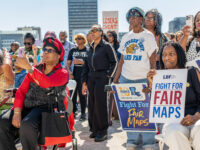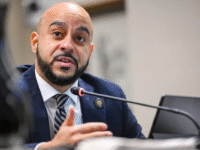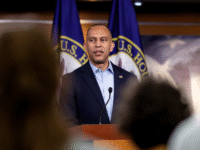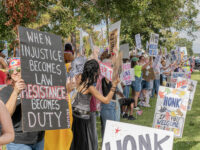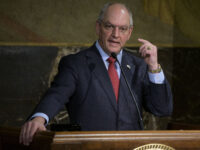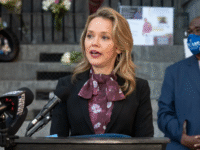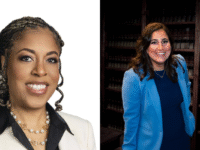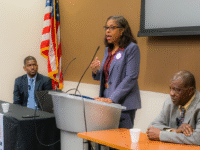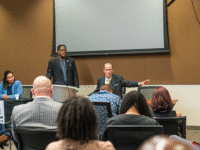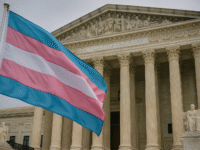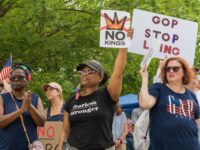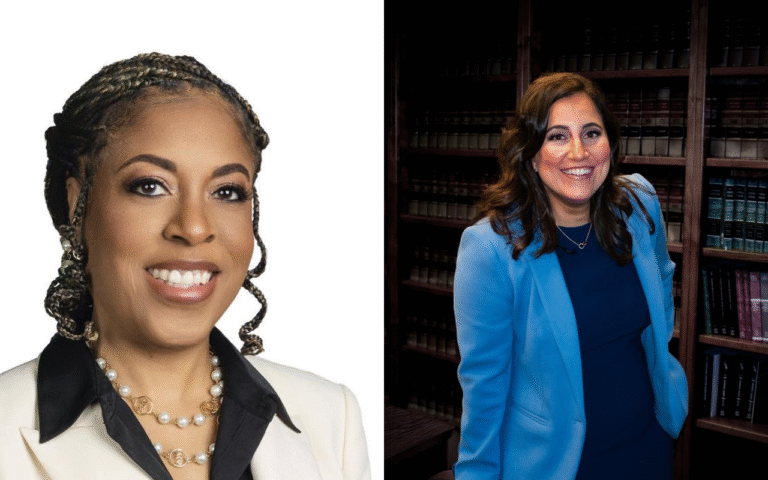Two key judicial seats in East Baton Rouge Parish were filled outright in the October 11 election, as Vicky Jones and Calli Boudreaux each won their respective races without the need for a runoff. But the story of the night was not just who won — it was how few people showed up to decide.
Unofficial turnout for the 19th Judicial District Court race was just 10.6%, and for the City Court race, a marginally higher 11.6%, according to the Louisiana Secretary of State. Both figures underscore a persistent pattern of civic disengagement, which has been especially prevalent in EBR in 2025. Earlier in the year, the election of state senator Larry Selders was decided by less than 10% of eligible voters.
Jones Wins 19th Judicial District Court Seat

In the special election to replace Judge Wilson Fields, who vacated his post to join the First Circuit Court of Appeal, Vicky Jones secured the win with 51 percent of the vote, defeating Vernon Thomas (18 %), Dele Adebamiji (16 %), and Elzie Alford Jr. (15 %).
The race featured an all-Democratic field, but Jones’s background drew particular attention. A former Republican who recently switched parties, Jones was endorsed by the East Baton Rouge Parish Democratic Executive Committee (DPEC) and emphasized throughout her campaign that she did not support Donald Trump in 2024 — a clarification aimed at addressing voter skepticism about her political past.
Jones’s strong showing reflected both her campaign’s organizational reach and the relative value of party infrastructure in low-profile elections, where endorsements and voter networks often can carry more weight than name recognition alone.
Boudreaux Captures City Court Seat

In the City Court, Division A race, Calli Boudreaux defeated Brenden Craig by a commanding 64-to-36 margin. Both candidates ran as Republicans — a rarity in heavily Democratic Baton Rouge — and that dynamic appeared to suppress participation further, particularly among Black voters.
Political observers noted that in majority-Democratic precincts, many voters skipped the race entirely rather than cast ballots for either Republican candidate. That hesitation, rooted partly in ongoing distrust toward the modern GOP in the Trump era, likely helped Boudreaux win with a relatively small but decisive voter base.
Ballot Measures: Renewals Pass Easily
Beyond the judicial contests, voters also weighed in on several local propositions — all of which passed comfortably.
-
Downtown Development District 10-Mill Renewal (Turnout: 15%)
Voters approved the five-year renewal of the 10-mill property tax by a 78–22 margin.
The measure authorizes the Metropolitan Council to continue levying an ad valorem tax expected to generate about $741,390 annually, to fund planning, management, and improvements within the Downtown Development District. -
Concord Estates Crime Prevention District Parcel Fee Renewal (Turnout: 24.7%)
Renewed with 76% support, this six-year, $69.50 annual parcel fee is expected to generate about $20,433 per year for neighborhood security efforts. -
Southern Heights Neighborhood Crime Prevention & Improvement District Parcel Fee Renewal (Turnout: 19.9%)
Passed with 80% support, this 10-year renewal allows the district to continue its annual parcel fee up to $100 per parcel, with the ability to raise it once to a maximum of $150 after five years. The measure is expected to bring in roughly $51,800 per year for public safety, beautification, and neighborhood improvements.
Turnout: Baton Rouge’s Civic Warning
Even with a slate of local taxes and two judgeships on the ballot, overall voter engagement barely broke into double digits. In both judicial races, fewer than one in nine registered voters participated.
This pattern is not new, but it is worsening — a reflection of how judicial and municipal elections, particularly those held outside major election cycles, often fail to capture public attention. The results were decisive, but the electorate was narrow, leaving critical decisions about justice and taxation in the hands of a small minority.
For Baton Rouge’s civic leaders, the Oct. 11 elections serve as both a conclusion and a caution: local governance still depends on who shows up — and on nights like this, that number is distressingly small.

